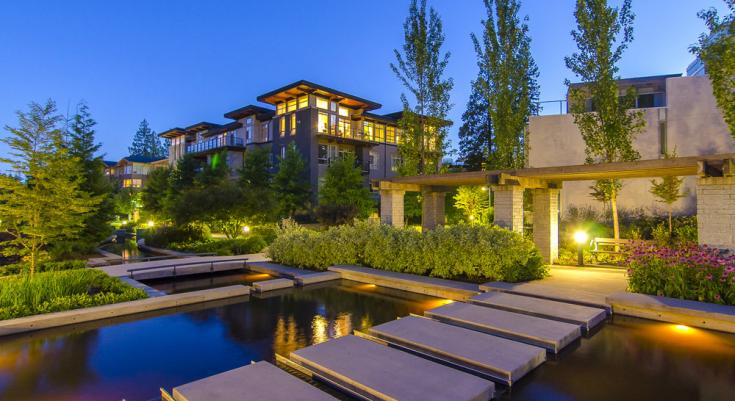
UBC’s neighbourhoods have an abundance of green space, and a range of recreational and childcare facilities that would be the envy of any municipality. They are all part of the University’s long-term plan to create a vibrant, diverse, sustainable community on campus.
On a hot day in August, three teenage girls are playing on the swings at Khorana Park in Wesbrook Village.
“Let’s play that spinning game again!” one yells, and the trio dashes over to a roundabout next to the swings. “Close your eyes! Hey, your hair is slamming me!” another giggles, as a mother with two toddlers looks up and smiles. An elderly man on a bench in the shade does not move, too engrossed in something on his phone.
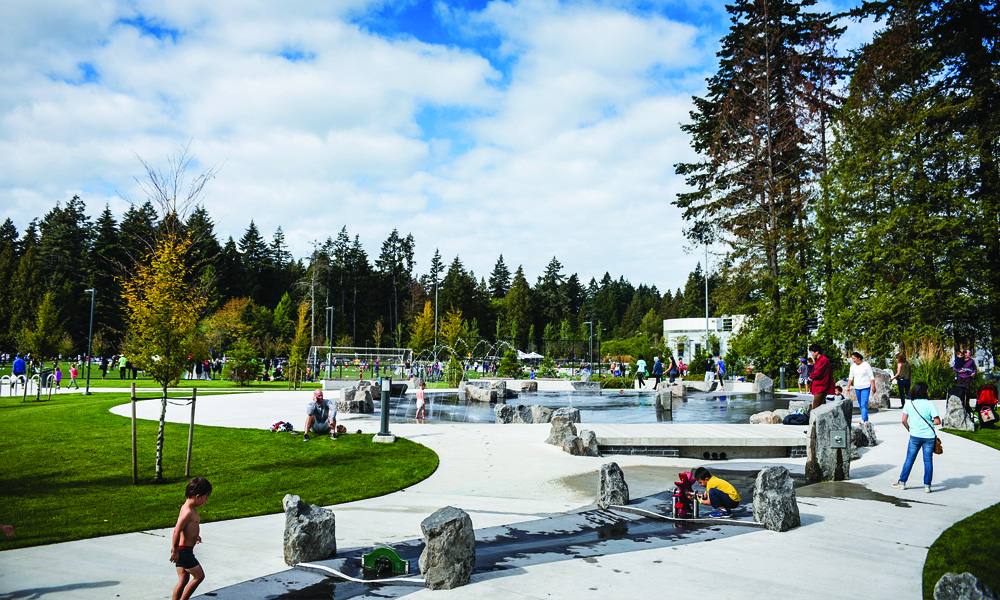
Wesbrook Village playground. Photo courtesy of University Neighbourhoods Association.
A few hundred metres to the south, five constructions workers in bright orange vests and hardhats are having lunch by the creek running into Nobel Park. A woman walks by with her dog while a sweaty student stretches his hamstrings after a jog in the forest. A dad watches his two children playing with diggers and trucks in the sand, in the shadow of two slender cranes on the neighbouring worksite.
An Abundance of Green Space
Wesbrook Place already has one community field and four “pocket parks” like Khorana and Nobel, with a fifth, Research Park, at consultation stage. It is also crisscrossed by a network of “green streets,” and is surrounded by an 870-hectare forest park, a 6.7-kilometre-long beach and a suite of top-notch recreational facilities. Not to mention a public swimming pool, community gardens, a research farm, two community centres, a botanical garden, a traditional Japanese garden. For a campus community with barely 10,000 residents, it’s an amazing offering.
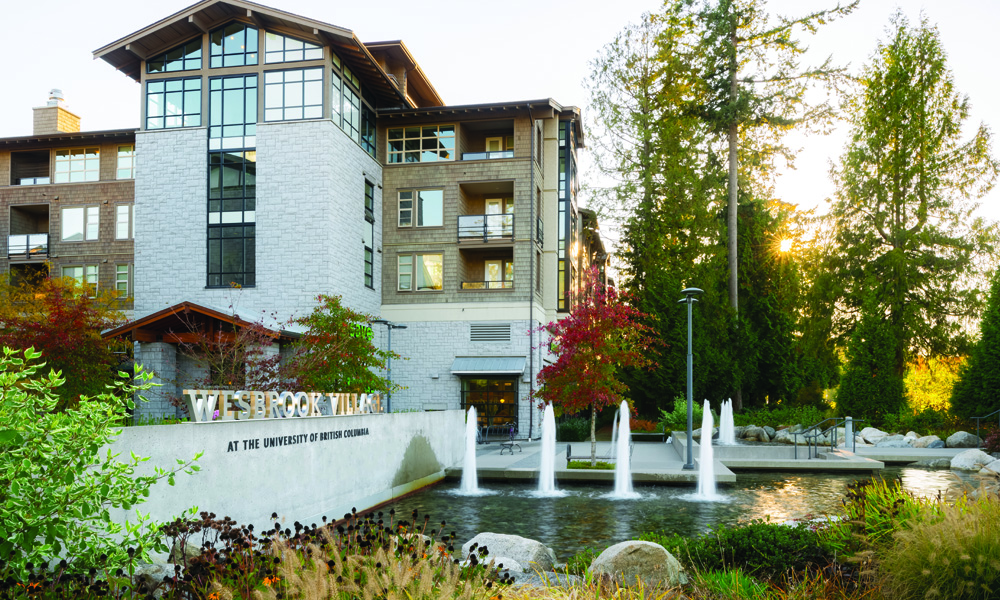
Water features provide a tranquil background at one of Wesbrook Village's "pocket parks." Photo courtesy of University Neighbourhoods Association.
The figures from 2016 show how much green space the entire UBC neighbourhoods, population 9,600, have compared to the neighbouring City of Vancouver, home to 631,500 people. UBC, for instance, has 7.3 hectares of open space per 1,000 residents, compared to 2 hectares for Vancouver and one community centre for every 4,800 residents, compared to one for every 26,300 Vancouverites.
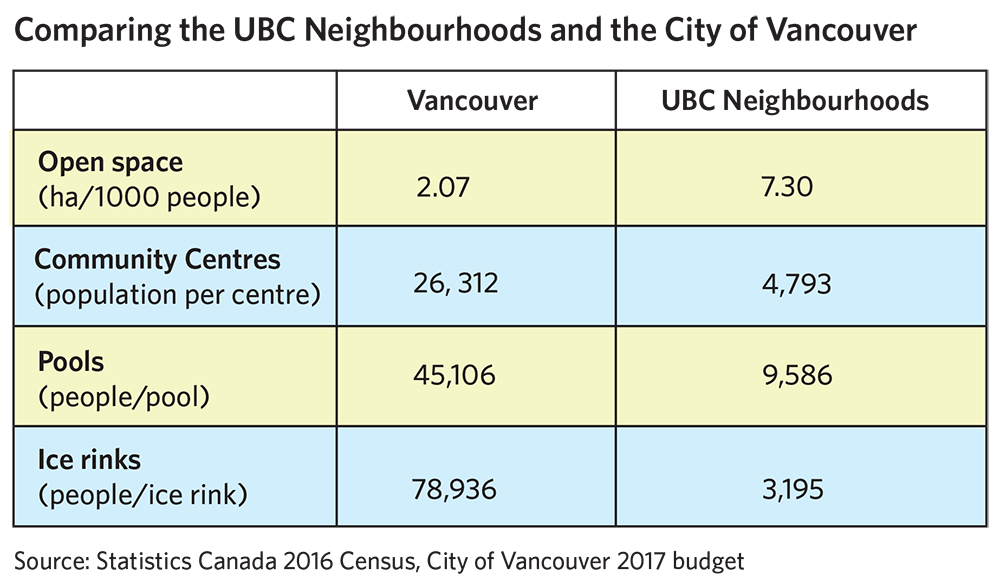
“There is no other community of 10,000 people in BC with anywhere near this number of amenities,” says Chris Fay, Manager, Policy Planning at Campus + Community Planning. “And then there’s the sports facilities: ice rinks, baseball diamonds, turf soccer fields.”
“Of course, there are also 50,000 students on campus,” adds Fay, “so Neighbourhood residents are sharing the facilities. That helps to make all these amazing amenities and spaces possible.”
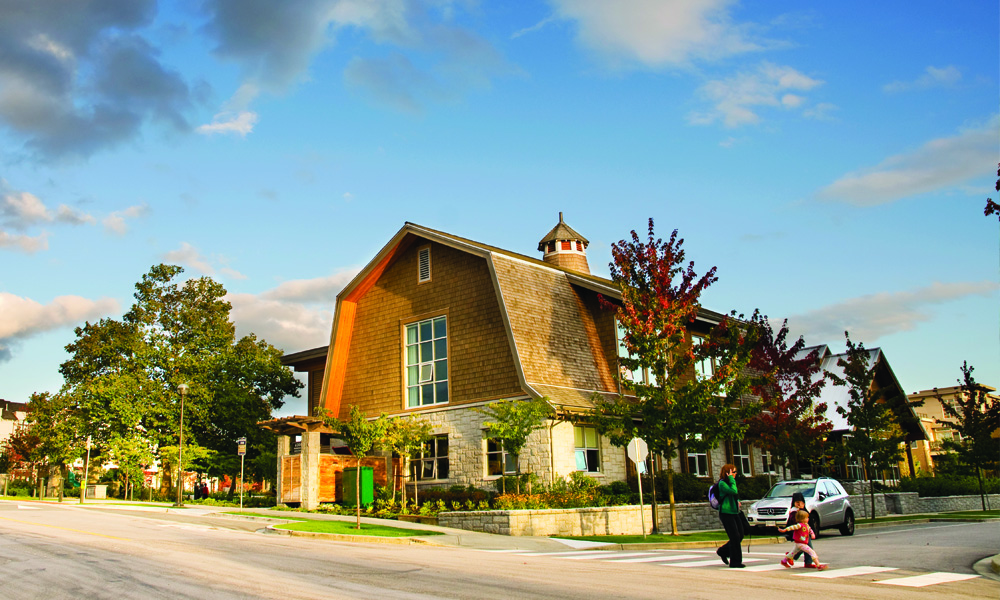
The Old Barn Community Centre, one of two community centres on campus. Photo courtesy of University Neighbourhoods Association.
Places for Spontaneity, Collision and Interaction
All these facilities and open spaces are in the pursuit of more sustainable communities, explains Michael White, Associate Vice-President Campus + Community Planning; not just ecological sustainability, which is being well demonstrated, but also social sustainability, the new frontier for many new communities.
“Our aspiration is for many of the neighbourhoods’ residents to work, live, study, and play right here, on campus,” White explains.
“To achieve that we have to address a number of different dimensions. There are the traditional ecological aspects — energy, water, waste, biodiversity — which we’re pushing forward in a number of different ways, including a new green buildings plan and a more natural-systems approach to issues like storm water management.
“But we’re also talking about pushing further than just the ecological aspect of sustainability. There’s the social aspect — trying to make the neighbourhoods active, healthy, vibrant places to live.
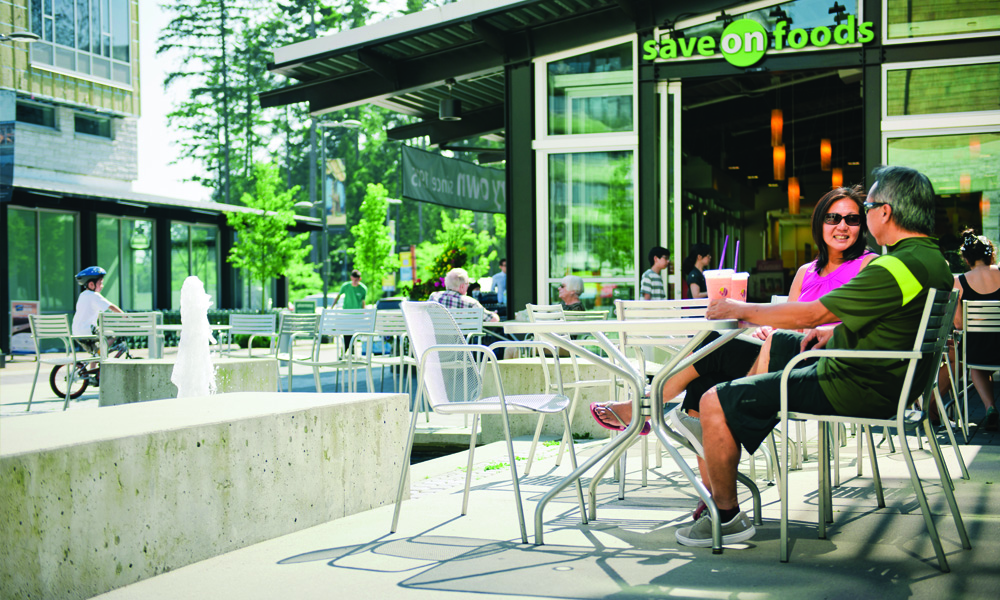
Enjoying the outdoor spaces at Wesbrook Village. Photo courtesy of University Neighbourhoods Association.
“How do you turn them into places that provide opportunities for spontaneity, collision and interaction?” asks White.
“That’s what we’re exploring — is it through design, programming, the mix of uses? How do you create a more naturally occurring community? How can we work with the people to provide those opportunities?”
“On a university campus, you can see people from different backgrounds coming together, interacting, sharing and coming up with ideas. And that happens in open spaces, community facilities and informal meeting places: by the fountain, at the coffee shop, while kids are playing. These are the opportunities to interact and exchange ideas. These kinds of spaces can play an important role here, they can be the venue for the next generation of ideas.”
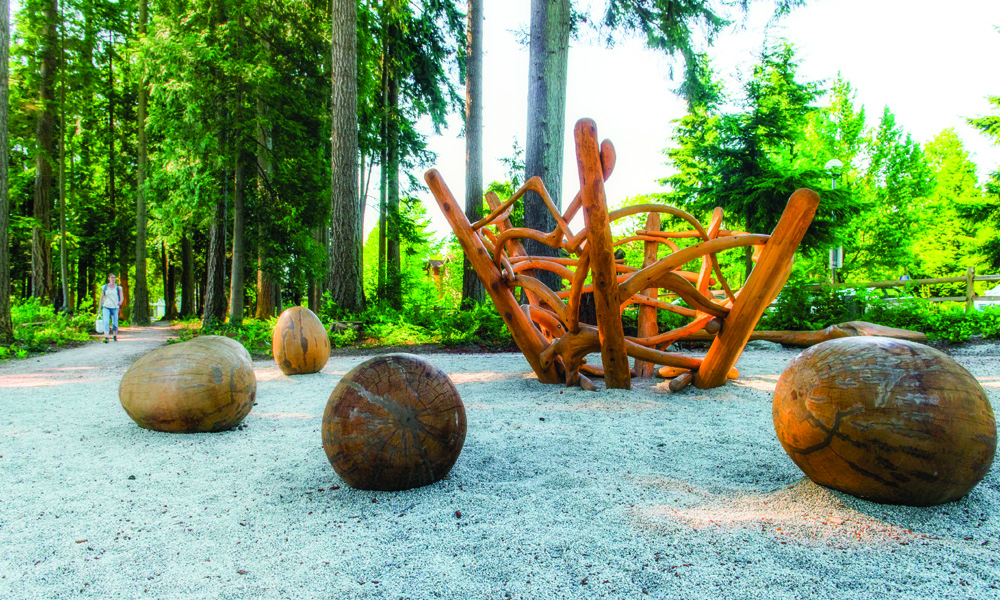
A wooden sculpture enlivens a trail near Wesbrook Village. Photo courtesy of University Neighbourhoods Association.
Big Challenges: Affordability and Transportation
Two of the bigger planning challenges — for UBC, but also for the whole region — are affordability and transportation. And White says we can’t address those without looking at both the region and each individual community — particularly the complete community concept.
“Yes, we need to urgently address better connectivity and affordability throughout the region (the two are inter-related). But we can also provide more complete communities so many can affordably live and work here on campus, walk or cycle, and enjoy the open space and amenities. This suite of opportunities starts to address fundamental ideas about complete, healthy, happy communities. We have to address the whole suite at both scales.”
“How do you create happy and healthy communities? That’s a big question. No one aspect can come at the expense of another. When we look at successful communities, they are typically a mix of housing types and tenancies, people, and activities, with an array of both physical and social infrastructure that underpins everything else.”
UBC planners are still exploring the answer to this complex question. But open space, community amenities and informal meeting places factor significantly in their recipe.